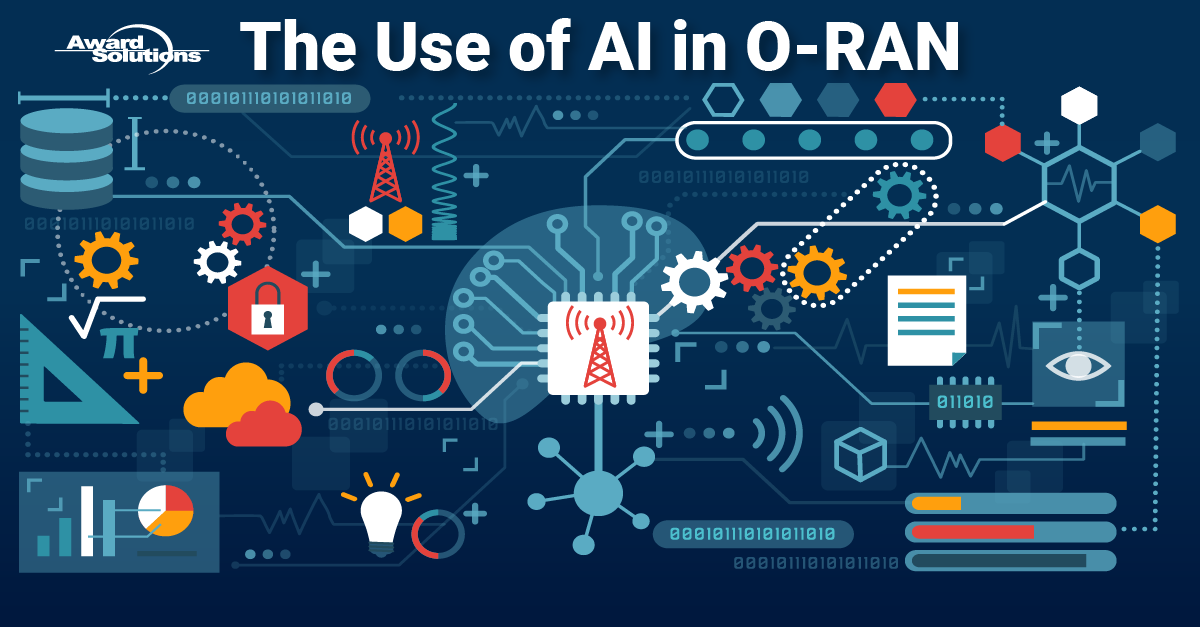
The world of telecommunications is undergoing a significant transformation with the advent of Open Radio Access Network (O-RAN) technology. O-RAN aims to create an open and intelligent ecosystem that revolutionizes mobile networks' deployment, management, and optimization. Let's explore the role of Artificial Intelligence (AI) in the Service Management and Orchestration (SMO) of O-RAN and how it shapes the future of telecommunications.
O-RAN is a disaggregated approach to mobile network architecture that allows for interoperability and flexibility, breaking vendor lock-in and promoting innovation. It separates the control and user planes, enabling multi-vendor deployments and facilitating the integration of new functionalities. On the other hand, Service Management and Orchestration in O-RAN focus on managing and optimizing network services across the RAN domain. AI emerges as a game-changer in the telecommunications industry, and its integration with SMO holds immense potential. There are several areas where AI revolutionizes SMO.
Intelligent Resource Management
One area in that AI revolutionizes SMO is Intelligent Resource Management. AI-powered algorithms analyze network data, including traffic patterns, usage trends, and network conditions to optimize resource allocation. AI algorithms enable dynamic optimization by intelligently predicting and adapting to changing demand, enhancing overall network performance and efficiency.
Predictive Maintenance and Fault Management
Another area of revolution is Predictive Maintenance and Fault Management. AI algorithms can detect patterns in vast data network equipment and sensors generate. By continuously monitoring network behavior, AI can identify potential issues before they escalate, enabling proactive maintenance and minimizing service disruptions. Predictive fault management reduces downtime, enhances network availability, and improves customer experience.
With Network Optimization, AI algorithms can optimize network parameters based on real-time data analysis, allowing for automated configuration and parameter tuning leading to improved coverage, reduced interference, and enhanced Quality of Service (QoS). AI-based optimization techniques help network operators adapt to changing network conditions and deliver optimal performance.
With Intelligent Traffic Engineering, the SMO in O-RAN uses AI to route and manage network traffic intelligently. AI algorithms analyze traffic patterns, user behavior, and network conditions to optimize routing decisions dynamically, ensuring efficient network resource utilization, reducing congestion, and providing an optimal user experience.
Self-Healing Networks
Lastly, with Self-Healing Networks, AI empowers the SMO to create self-healing networks capable of autonomously detecting and mitigating real-time issues. Through continuous monitoring, AI algorithms can identify anomalies, analyze root causes, and trigger automated remedial actions. Self-healing networks significantly reduce downtime and improve service availability.
While the use of AI in SMO offers tremendous benefits, there are important considerations and challenges to address. AI algorithms heavily rely on quality data for accurate predictions and decision-making. Ensuring data integrity, security, and privacy while leveraging sensitive network information is crucial. The transparency of AI algorithms is essential, particularly in mission-critical operations. Network operators must understand the reasoning behind AI-driven decisions to build trust and confidence.
Adopting AI in SMO requires skilled professionals who can develop, deploy, and maintain AI-based solutions. Addressing the skill gap and investing in training programs are crucial for successful implementation. The use of AI in telecommunications must adhere to applicable regulations and data protection laws. Network operators should ensure compliance with relevant policies and standards.
AI is transforming the SMO landscape in O-RAN, unlocking new possibilities and efficiencies in network management and optimization. By harnessing the power of AI, O-RAN enables intelligent resource management, predictive maintenance, network optimization, traffic engineering, and self-healing networks. As the telecommunications industry evolves, AI will play a pivotal role in shaping the future of O-RAN, driving innovation, and improving network performance for users worldwide.
Chris Reece, Technologist, Award Solutions, Inc.
Chris Reece works with leading global service providers, transforming networks and empowering individuals in 5G, Virtualization/Containerization, and Machine Learning/Artificial Intelligence. Service providers rely on Chris to paint both the big picture and the business impact of technology and appreciate his enthusiasm for getting into deep, detailed discussions when needed. You may have seen Chris on Award Solutions' YouTube Channel. In addition, Chris is featured at leading telecom conferences worldwide, including MWC, and in publications like IEEE Spectrum and DZONE.
Chris holds a master's degree in Computer Science Telecommunications from the University of Missouri at Kansas City and a bachelor's degree in Computer Science and Mathematics from Cameron University. He also holds four patents in wireless technologies.
